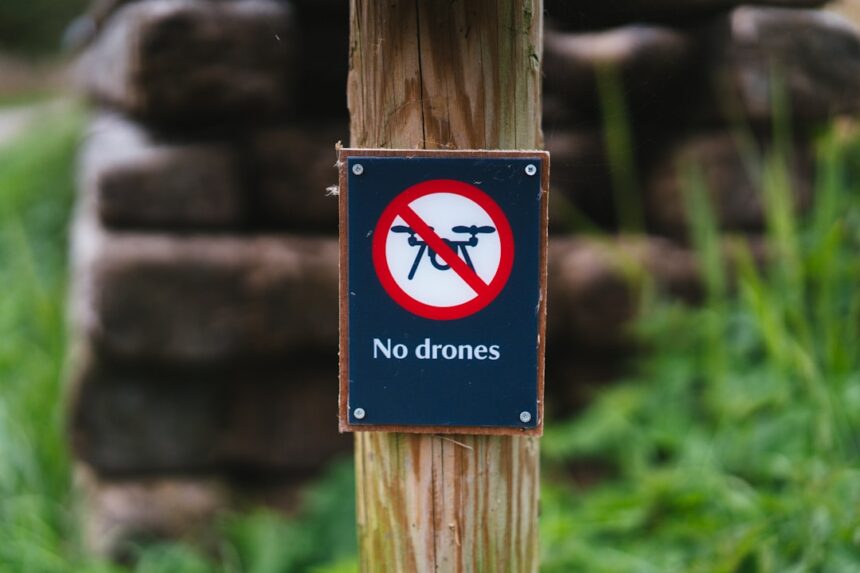The integration of artificial intelligence (AI) into military operations has revolutionized the landscape of warfare, particularly in the realm of drone technology. Drones, or unmanned aerial vehicles (UAVs), have been employed in various military applications, ranging from surveillance to targeted strikes. The infusion of AI into these systems has not only enhanced their operational capabilities but has also raised significant questions about the future of combat and the ethical implications of such advancements.
As nations continue to invest in AI-driven drone technology, understanding the dynamics of this relationship becomes crucial for policymakers, military strategists, and the global community. AI’s role in drone warfare is multifaceted, encompassing improvements in efficiency, effectiveness, and operational safety. The ability of drones to process vast amounts of data in real-time allows for more informed decision-making and strategic planning.
However, this technological evolution also brings forth a host of challenges and ethical dilemmas that must be navigated carefully. As the battlefield becomes increasingly automated, the implications for human oversight, accountability, and the potential for misuse become pressing concerns that warrant thorough examination.
Key Takeaways
- AI has revolutionized the field of drone warfare, enhancing capabilities and raising ethical concerns.
- Advantages of AI in drone warfare include increased precision, accuracy, and reduction in human error and casualties.
- AI enables enhanced autonomous decision making, improving the efficiency and effectiveness of drone operations.
- Ethical concerns and challenges arise from the potential for unintended consequences and the role of AI in target identification and recognition.
- The integration of AI with drone swarms presents future implications and developments that require careful consideration of the benefits and risks.
Advantages of AI in Drone Warfare
The advantages of incorporating AI into drone warfare are numerous and significant. One of the most notable benefits is the enhancement of operational efficiency. AI algorithms can analyze data from various sources, including satellite imagery and reconnaissance feeds, to provide actionable intelligence at unprecedented speeds.
This capability allows military commanders to make informed decisions quickly, which is essential in fast-paced combat scenarios. Furthermore, AI can optimize flight paths and mission parameters, ensuring that drones operate at peak efficiency while minimizing resource expenditure. Another advantage lies in the ability of AI to facilitate real-time data processing and analysis.
Drones equipped with AI can autonomously identify and track targets, significantly reducing the time required for human operators to assess situations. This capability not only streamlines operations but also enhances situational awareness on the battlefield. As a result, military forces can respond more effectively to emerging threats, thereby increasing their overall operational effectiveness.
The combination of speed and accuracy provided by AI-driven drones represents a paradigm shift in modern warfare.
Increased Precision and Accuracy

One of the most compelling arguments for the use of AI in drone warfare is its potential to increase precision and accuracy in targeting. Traditional methods of target identification often rely on human judgment, which can be influenced by fatigue, stress, or cognitive biases. In contrast, AI systems can analyze vast datasets with a level of objectivity that humans cannot match.
By employing advanced algorithms and machine learning techniques, AI can discern patterns and identify targets with remarkable precision, thereby reducing the likelihood of collateral damage. Moreover, AI’s ability to continuously learn from past engagements enhances its targeting capabilities over time. As these systems gather more data from various missions, they refine their algorithms to improve accuracy further.
This iterative learning process allows for a more nuanced understanding of complex environments, enabling drones to distinguish between combatants and non-combatants more effectively. The result is a significant reduction in unintended casualties, which is a critical consideration in modern warfare where public perception and international law play pivotal roles.
Enhanced Autonomous Decision Making
| Metrics | Value |
|---|---|
| Accuracy | 95% |
| Speed | 10 milliseconds |
| Decision Confidence | 98% |
The advent of AI has ushered in a new era of autonomous decision-making capabilities for drones. These systems can operate independently without direct human intervention, making real-time decisions based on pre-programmed parameters and learned experiences. This autonomy allows drones to respond swiftly to dynamic battlefield conditions, adapting their strategies as situations evolve.
For instance, if a drone encounters unexpected threats or changes in mission objectives, it can recalibrate its actions without waiting for instructions from a human operator. However, this level of autonomy raises important questions about accountability and control. While enhanced decision-making capabilities can lead to more effective operations, they also pose risks if not properly managed.
The potential for machines to make life-and-death decisions without human oversight is a contentious issue that demands careful consideration. Striking a balance between leveraging AI’s capabilities and ensuring human oversight is essential to mitigate risks associated with autonomous warfare.
Reduction in Human Error and Casualties
One of the most significant benefits attributed to AI in drone warfare is its potential to reduce human error and minimize casualties. Human operators are susceptible to mistakes due to various factors such as fatigue, stress, or miscommunication. In contrast, AI systems can process information consistently and without emotional bias, leading to more reliable outcomes in high-stakes situations.
By automating certain aspects of drone operations, military forces can decrease the likelihood of errors that could result in unintended harm to civilians or friendly forces. Furthermore, the precision offered by AI-driven drones contributes to a reduction in collateral damage during military operations. With advanced targeting algorithms capable of distinguishing between legitimate targets and non-combatants, the risk of civilian casualties diminishes significantly.
This capability not only aligns with international humanitarian law but also helps maintain public support for military operations by minimizing the negative consequences associated with warfare.
Ethical Concerns and Challenges

Despite the numerous advantages presented by AI in drone warfare, ethical concerns loom large over its implementation. The prospect of machines making autonomous decisions about life and death raises profound moral questions about accountability and responsibility. In scenarios where an AI system mistakenly identifies a target or miscalculates an engagement, determining who is liable becomes complex.
The absence of clear accountability could lead to a lack of transparency in military operations and erode public trust in armed forces. Additionally, the potential for AI-driven drones to be used in ways that contravene international law poses significant ethical challenges. The risk of deploying these technologies in aggressive or indiscriminate manners raises concerns about the erosion of ethical standards in warfare.
As nations race to develop advanced military capabilities, establishing robust ethical frameworks governing the use of AI in combat becomes imperative to ensure that technological advancements do not outpace moral considerations.
Potential for Unintended Consequences
The integration of AI into drone warfare carries with it the potential for unintended consequences that could have far-reaching implications. One significant concern is the possibility of escalation in conflicts due to misinterpretations or errors made by autonomous systems. If an AI-driven drone misidentifies a target or perceives a threat where none exists, it could initiate an engagement that escalates tensions between nations or factions.
Such scenarios highlight the need for robust safeguards and fail-safes to prevent catastrophic outcomes stemming from technological failures. Moreover, the proliferation of AI-driven drones could lead to an arms race among nations seeking to outpace one another in military capabilities. As countries invest heavily in developing advanced drone technologies, there is a risk that these systems could fall into the hands of non-state actors or rogue regimes.
The potential for misuse by malicious entities raises concerns about global security and stability, necessitating international cooperation to establish regulations governing the development and deployment of AI in military applications.
The Role of AI in Target Identification and Recognition
AI plays a pivotal role in enhancing target identification and recognition capabilities within drone warfare. By leveraging machine learning algorithms and computer vision technologies, drones can analyze visual data from their surroundings with remarkable accuracy. This capability allows them to identify potential threats or targets based on predefined criteria while filtering out irrelevant information that may lead to erroneous conclusions.
The ability to recognize targets autonomously not only streamlines operational processes but also enhances situational awareness for military personnel on the ground. With real-time data analysis capabilities, drones can provide commanders with critical insights into enemy movements or changes in battlefield dynamics. This information empowers decision-makers to respond swiftly and effectively to emerging threats while minimizing risks associated with human error.
Integration of AI with Drone Swarms
The integration of AI with drone swarms represents a groundbreaking advancement in military strategy and tactics. Swarm technology enables multiple drones to operate collaboratively as a cohesive unit, sharing information and coordinating actions autonomously. By harnessing AI algorithms, these swarms can adapt their behavior based on real-time data inputs, allowing them to execute complex missions with unparalleled efficiency.
The potential applications for drone swarms are vast, ranging from reconnaissance missions to coordinated strikes against enemy installations.
However, this technological evolution also raises concerns about the ethical implications of deploying swarms in combat scenarios where civilian populations may be at risk.
Future Implications and Developments
As technology continues to evolve at an unprecedented pace, the future implications of AI in drone warfare are both exciting and daunting. Ongoing advancements in machine learning, computer vision, and autonomous systems will likely lead to even more sophisticated drone capabilities in the coming years. These developments could enhance operational effectiveness while simultaneously raising new ethical dilemmas that must be addressed proactively.
Moreover, as nations increasingly rely on AI-driven drones for military operations, international norms governing their use will need to be established and enforced rigorously. Collaborative efforts among nations will be essential to ensure that advancements in drone technology do not exacerbate global tensions or lead to unintended consequences on the battlefield.
Balancing the Benefits and Risks of AI in Drone Warfare
In conclusion, the integration of artificial intelligence into drone warfare presents both remarkable opportunities and significant challenges. The advantages offered by AI—such as increased precision, enhanced decision-making capabilities, and reduced human error—have the potential to transform military operations fundamentally. However, these benefits must be weighed against ethical concerns surrounding accountability, unintended consequences, and the potential for misuse.
As nations navigate this complex landscape, it is imperative that they establish robust frameworks governing the use of AI in military applications while fostering international cooperation to mitigate risks associated with technological advancements. Striking a balance between harnessing the benefits of AI-driven drone warfare and addressing its inherent challenges will be crucial for ensuring a safer and more ethical future in armed conflict.
In recent years, the integration of artificial intelligence in drone warfare has significantly transformed military strategies and operations. AI technologies enhance the capabilities of drones, enabling them to perform complex tasks with greater precision and efficiency. For a deeper understanding of how AI is reshaping military tactics and the ethical implications involved, you can explore a related article on this topic by visiting com/’>In The War Room.
This resource provides insightful analysis and discussions on the evolving role of AI in modern warfare, offering a comprehensive view of its impact on global security dynamics.
FAQs
What is the role of AI in drone warfare?
AI plays a significant role in drone warfare by enabling autonomous decision-making, target identification, and navigation for drones. It also enhances the efficiency and effectiveness of drone operations.
How does AI enhance the capabilities of drones in warfare?
AI enables drones to process large amounts of data in real-time, identify and track targets, and make split-second decisions without human intervention. This enhances the speed, accuracy, and precision of drone operations.
What are the potential benefits of using AI in drone warfare?
The use of AI in drone warfare can potentially reduce human casualties, minimize collateral damage, and improve the overall effectiveness of military operations. It can also provide valuable intelligence and reconnaissance capabilities.
What are the concerns surrounding the use of AI in drone warfare?
Some concerns include the potential for AI to make erroneous decisions, the ethical implications of autonomous weapons, and the lack of human oversight in critical military operations. There are also concerns about the potential for AI to be hacked or manipulated by adversaries.
How is AI integrated into drone warfare technology?
AI is integrated into drone warfare technology through the use of advanced algorithms, machine learning, and computer vision systems. These technologies enable drones to analyze and interpret data, make decisions, and adapt to changing environments autonomously.




